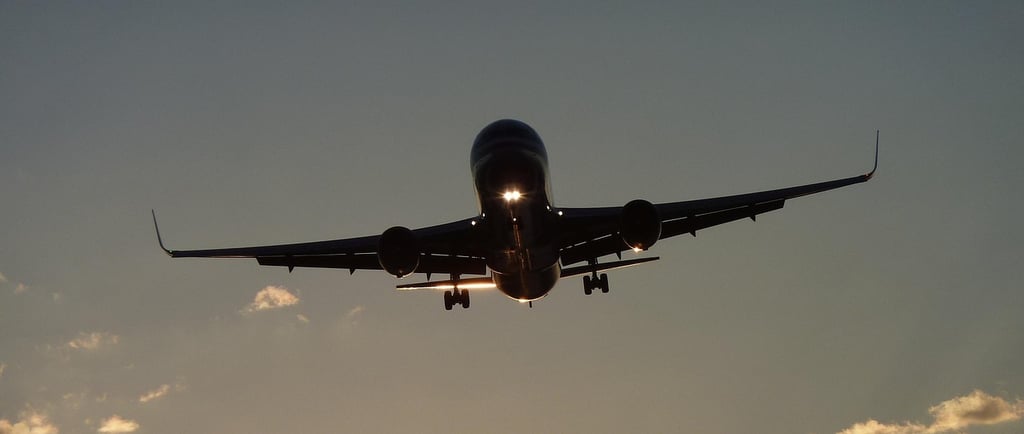The World’s Top Five Largest Commercial Aircraft: Engineering Marvels of the Skies
The evolution of commercial aviation has been marked by a relentless pursuit of size, efficiency, and innovation. From the early days of propeller-driven planes to today’s engineering marvels, manufacturers have pushed boundaries to create aircraft capable of carrying more passengers and cargo across vast distances. This article explores the five largest commercial aircraft ever built, highlighting their design, capabilities, and impact on global aviation.
3/15/20253 min read


1. Airbus A380-800: The Giant of the Skies
Manufacturer: Airbus (Europe)
First Flight: 2005 | Introduction: 2007
Role: Ultra-high-capacity passenger airliner
Dimensions:
Length: 72.7 meters (238.6 feet)
Wingspan: 79.8 meters (261.8 feet)
Height: 24.1 meters (79 feet)
Maximum Takeoff Weight (MTOW): 575 tonnes (1.26 million lbs)
Capacity:
Passengers: 853 in all-economy configuration (typically 500–600 in three-class layouts).
Cargo: 175.9 cubic meters (6,214 cubic feet) of lower-deck storage.
Performance:
Engines: Four options: Rolls-Royce Trent 900 or Engine Alliance GP7200 turbofans.
Range: 15,200 km (8,200 nautical miles).
Cruise Speed: Mach 0.85 (903 km/h or 561 mph).
Significance:
The A380, nicknamed the “Superjumbo,” redefined long-haul travel with its double-deck design, offering amenities like bars, lounges, and showers. Despite its engineering brilliance, production ceased in 2021 due to declining demand for four-engine aircraft. Emirates remains its largest operator, with plans to fly the A380 until the 2030s.
2. Boeing 747-8: The Queen of the Skies’ Final Bow
Manufacturer: Boeing (USA)
First Flight: 2010 | Introduction: 2011
Role: Passenger and cargo wide-body jet
Dimensions:
Length: 76.3 meters (250.2 feet) – the longest commercial aircraft until the 777X.
Wingspan: 68.4 meters (224.4 feet).
Height: 19.4 meters (63.6 feet).
MTOW: 447.7 tonnes (987,000 lbs).
Capacity:
Passengers (747-8I): 605 in a high-density layout (typically 467 in three classes).
Cargo (747-8F): 137.7 tonnes (303,000 lbs).
Performance:
Engines: Four GEnx-2B67 turbofans.
Range: 14,815 km (8,000 nautical miles) for passenger variant; 8,130 km (4,390 NM) for freighter.
Cruise Speed: Mach 0.855 (913 km/h or 567 mph).
Significance:
The 747-8 modernized Boeing’s iconic “Jumbo Jet” with improved aerodynamics and fuel efficiency. Though outsold by twin-engine rivals, it remains a cargo workhorse. Production will end in 2022, marking the close of the 747’s 54-year legacy.
3. Antonov An-124 Ruslan: The Heavy-Lift Champion
Manufacturer: Antonov Design Bureau (Ukraine/USSR)
First Flight: 1982 | Introduction: 1986
Role: Strategic airlift cargo aircraft
Dimensions:
Length: 68.96 meters (226.2 feet).
Wingspan: 73.3 meters (240.5 feet).
Height: 20.78 meters (68.2 feet).
MTOW: 402 tonnes (886,000 lbs).
Capacity:
Cargo: 150 tonnes (330,000 lbs), with a cavernous 1,160 cubic meters (41,000 cubic feet) hold.
Unique Features: Nose and tail cargo doors for rapid loading.
Performance:
Engines: Four Ivchenko Progress D-18T turbofans.
Range: 5,400 km (2,900 NM) with maximum payload; 14,000 km (7,500 NM) empty.
Cruise Speed: 800–850 km/h (430–460 knots).
Significance:
The An-124 dominates outsized cargo transport, delivering everything from locomotives to humanitarian aid. Only 55 were built, with most operated by Russia’s Volga-Dnepr and Ukraine’s Antonov Airlines. Its larger sibling, the six-engine An-225 Mriya (destroyed in 2022), once held the title of heaviest aircraft ever built.
4. Airbus A340-600: The Long-Haul Specialist
Manufacturer: Airbus (Europe)
First Flight: 2001 | Introduction: 2002
Role: Long-range passenger airliner
Dimensions:
Length: 75.3 meters (247 feet) – the world’s longest airliner until 2018.
Wingspan: 63.45 meters (208.2 feet).
Height: 17.2 meters (56.4 feet).
MTOW: 380 tonnes (837,000 lbs).
Capacity:
Passengers: 475 in two-class seating; 320–370 in typical three-class layouts.
Performance:
Engines: Four Rolls-Royce Trent 500 turbofans.
Range: 14,450 km (7,800 NM).
Cruise Speed: Mach 0.83 (871 km/h or 541 mph).
Significance:
The A340-600 competed with Boeing’s 777 but struggled due to higher fuel costs from its four engines. Despite this, it offered exceptional comfort on ultra-long routes. Most have been retired, though a few remain in service with Lufthansa and Iberia.
5. Boeing 777-9: The Future of Twin-Engine Giants
Manufacturer: Boeing (USA)
First Flight: 2020 | Expected Entry: 2025
Role: Long-range, high-capacity passenger airliner
Dimensions:
Length: 76.7 meters (251.9 feet) – the longest commercial aircraft ever built.
Wingspan: 71.8 meters (235.5 feet; folds to 64.8 meters for airport compatibility).
Height: 19.5 meters (64 feet).
MTOW: 351.5 tonnes (775,000 lbs).
Capacity:
Passengers: 426 in two classes; typical three-class layouts seat 350–400.
Performance:
Engines: Two GE9X turbofans (the world’s largest with a 3.4-meter fan diameter).
Range: 13,500 km (7,285 NM).
Cruise Speed: Mach 0.84 (905 km/h or 560 mph).
Significance:
Part of the 777X family, the -9 variant features composite wings and folding tips for efficiency. Despite delays, it promises 10% lower fuel burn than competitors. Major customers include Emirates and Lufthansa.
Conclusion: Balancing Size and Efficiency
These aircraft represent the pinnacle of aerospace engineering, each excelling in different niches. The A380 and 747-8 symbolize the era of four-engine giants, while the An-124 remains indispensable for cargo. The A340-600 and 777-9 highlight the shift toward twin-engine efficiency without sacrificing capacity. As aviation prioritizes sustainability, future giants may rely on alternative fuels or hybrid systems, but the legacy of these titans will endure as milestones in human ingenuity.
Contact us
Copyright © 2025. Ralnoscape All rights reserved.
Destinations
Resources


Follow us
This website uses affiliate links which may earn a commission at no additional cost to you
